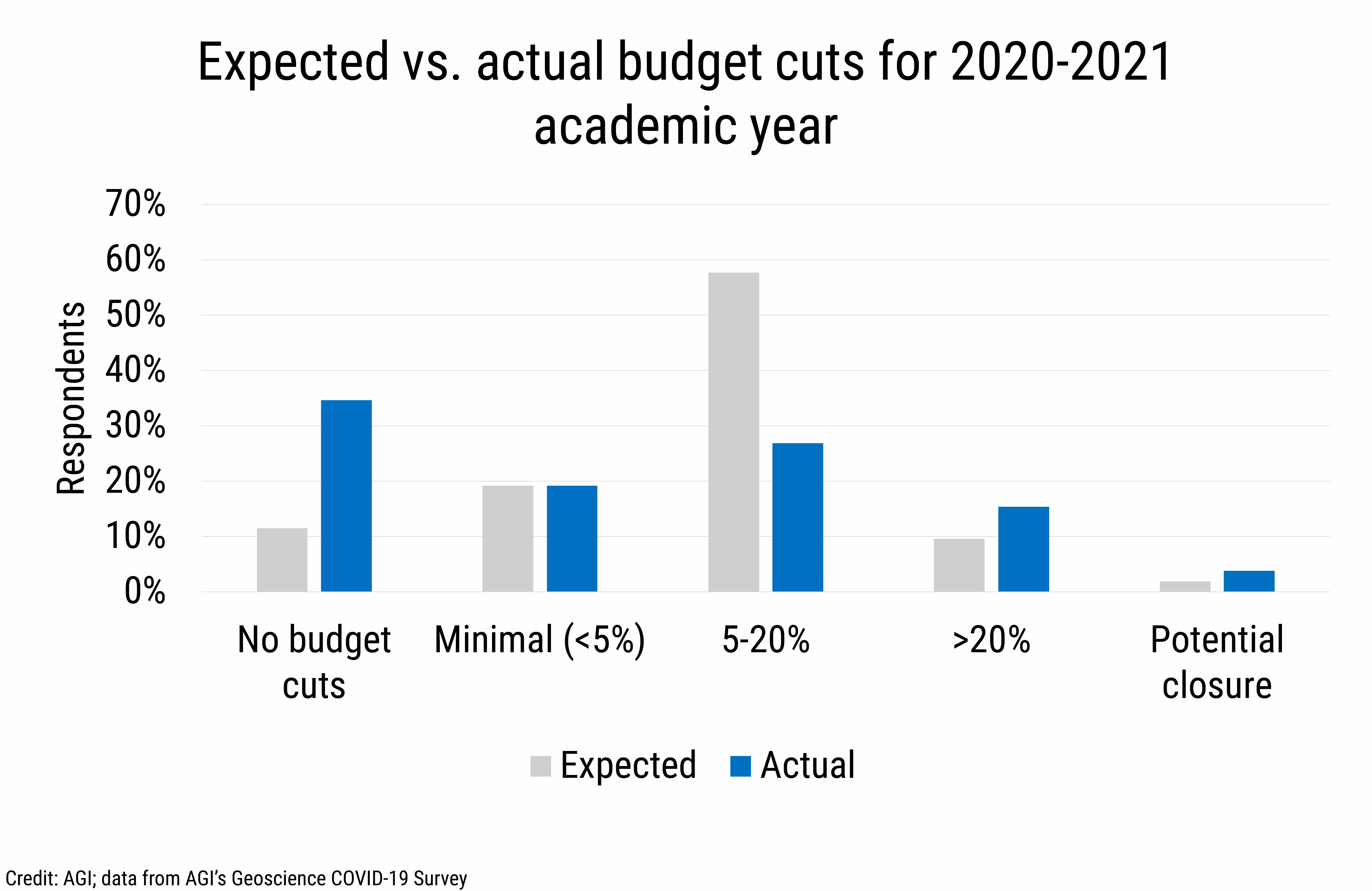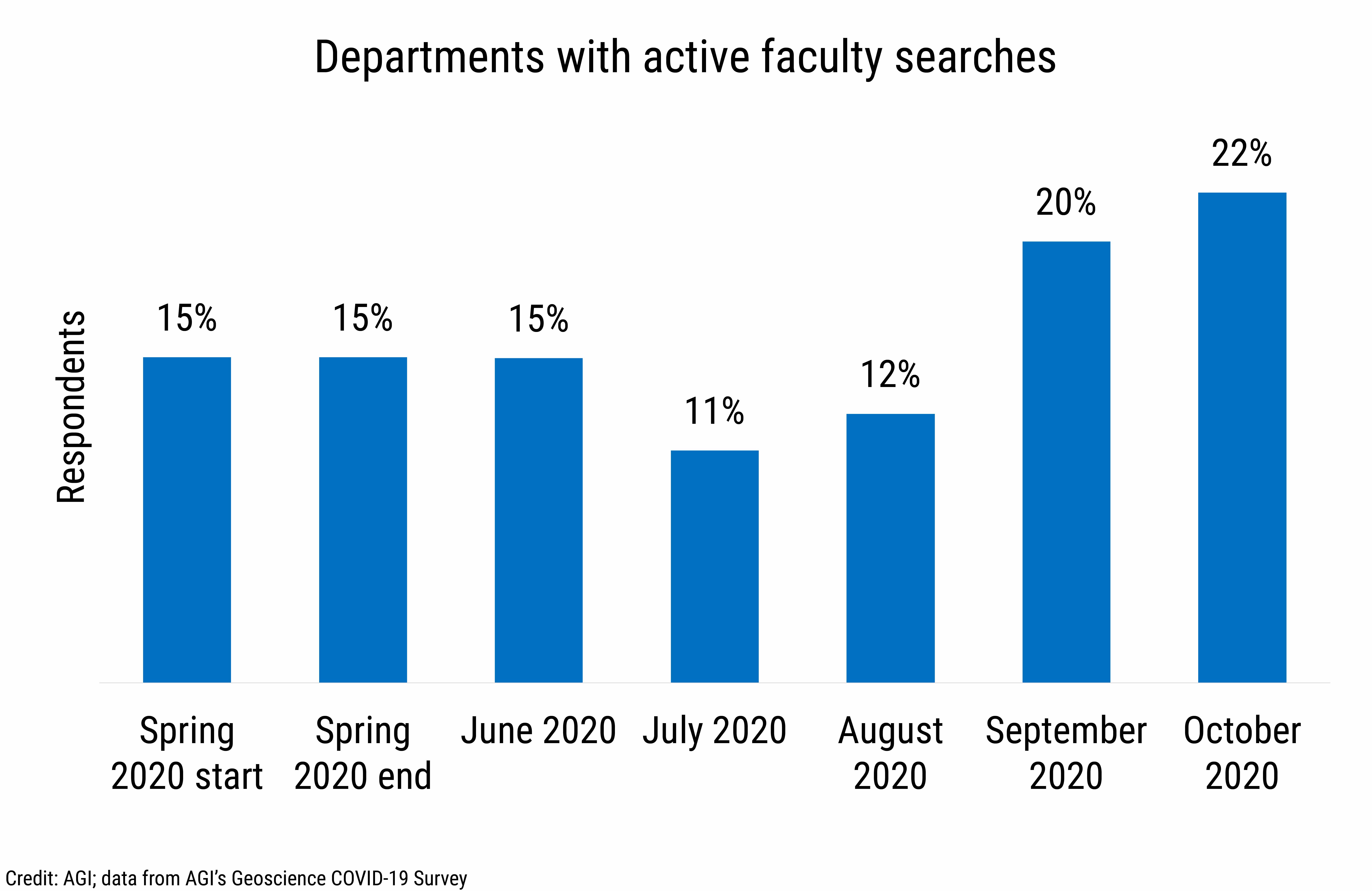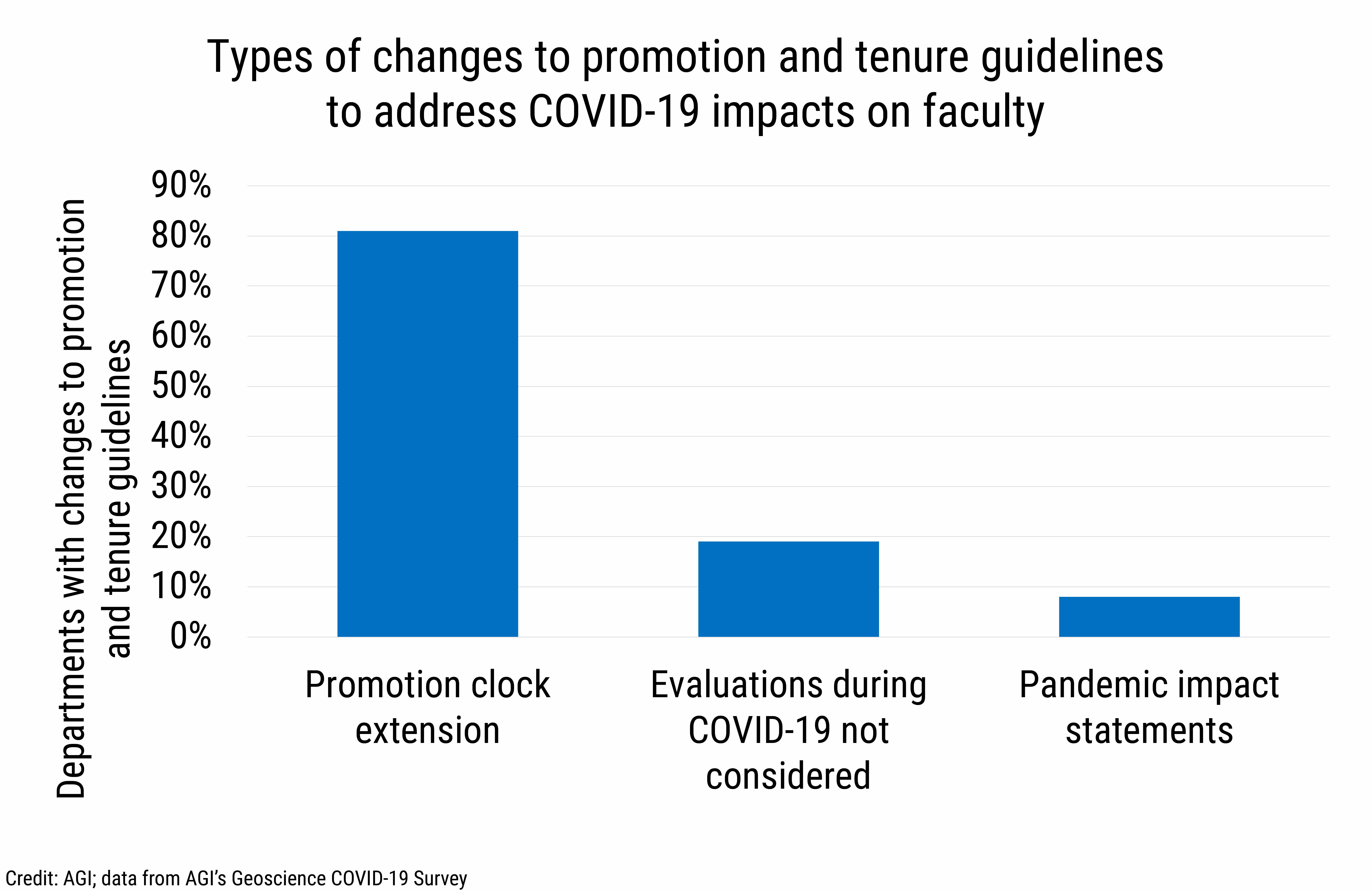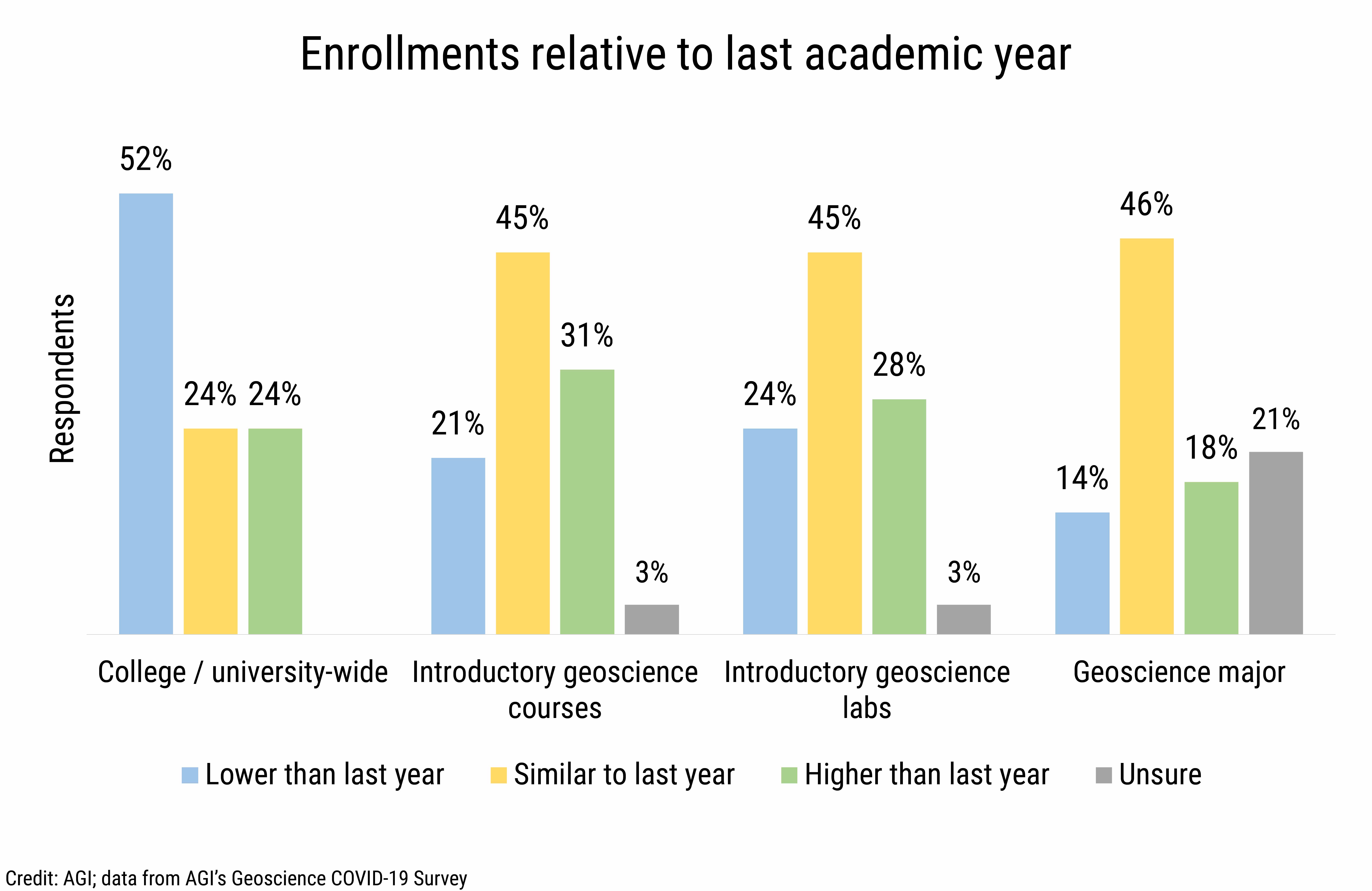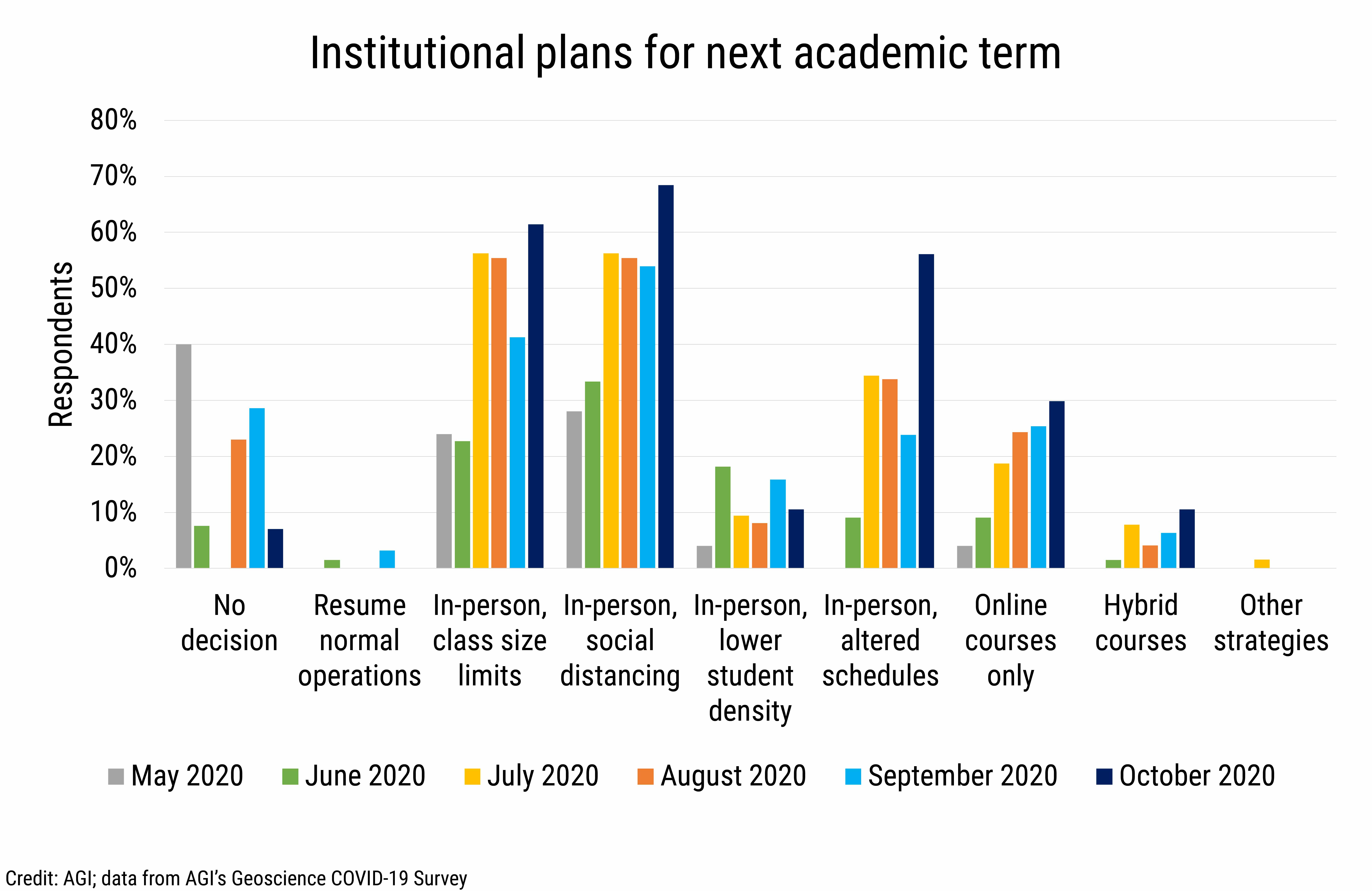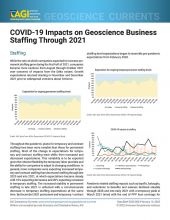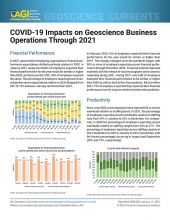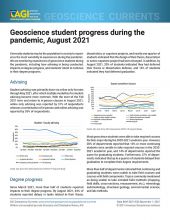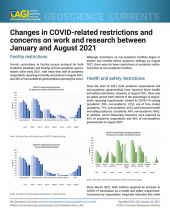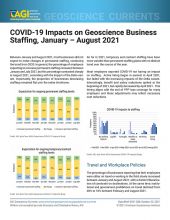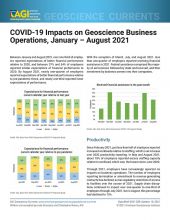This data brief examines the continued impacts on geoscience academic departments by the COVID-19 pandemic, including budgets, staffing and enrollments, promotion and tenure guidelines, and planning for the next academic term.
Budget cuts
Overall, budget impacts for 2020-2021 academic year were less severe than expected for most geoscience academic departments with 35% of departments reporting no budget cuts and 46% reporting cuts of 20% or less. Nearly half of departments that expected budget cuts early in the pandemic reported that cuts were as expected, while just over a third of departments reported less severe cuts than expected, and 16% of departments reported cuts that were worse than expected.
Departmental staffing
Most impacts to departmental staffing such as salary and benefits reductions, staff and faculty furloughs and layoffs occurred by the end of May 2020. Over the summer, some departments reported furloughs and reduced hours for staff. By June, 58% of geoscience academic departments reported no additional impacts to staffing, and by August, 93% of departments reported the same.
In terms of faculty travel and field activities, in July, 65% of departments reported faculty on travel or in the field but by October this percentage declined to 44%. This decline is likely in part due to the resumption of classes during the Fall term. Most departments with faculty on travel or in the field reported travel was allowed to limited locations.
In addition, since May 2020, the percentage of departments reporting faculty not traveling or doing field work due to personal decisions increased from 13% to 29%. Since June, the percentage of departments reporting restrictions on travel and field activities from government policies declined, while the percentage reporting restrictions from departmental or institutional policies fluctuated between 18% and 37%.
Faculty searches, which declined in July and August, have increased in the past two months, with just over one-fifth of departments in October reporting having active faculty searches.
Changes to promotion and tenure guidelines
Responses from departments and faculty were pooled to better understand what changes, if any, are being made to promotion and tenure guidelines to address the impacts from the pandemic on faculty productivity. Just over half of academic departments (53%) reported to have changed their promotion and tenure guidelines. Of those departments who changed their guidelines, 81% allowed for promotion clock extension, usually of a 1-year duration. Two-thirds of departments offering promotion clock extensions required faculty to request the extension while 23% automatically applied the extension to tenure-track faculty, and 12% of departments did not specify the extension condition. Other changes to the promotion and tenure guidelines included eliminating teaching evaluations during the pandemic, with most departments providing faculty with the option of disregarding Spring 2020 student and teaching evaluations, and the inclusion of pandemic impact statements on promotion reviews.
Of the faculty who reported that their departments changed the promotion and tenure guidelines, 13% opted to take advantage of the changes. The most common change that was requested was promotion clock extensions.
Enrollments
In October changes in enrollments relative to last academic year both at the institution-wide level as well as within the department were canvassed. Over half of departments reported that enrollments were lower than last year at their institution, while 45% of departments reported enrollments were similar to last year in introductory geoscience courses, labs and geoscience majors. Nearly one-quarter of departments reported increased enrollments relative to last year at their institution, while the percentage of departments reporting increased enrollments within the department ranged from 18% in geoscience majors to 31% in introductory geoscience courses.
Planning for the next term
Institutional planning for the next academic term has increasingly focused on the use of three in-person instructional formats: limited class sizes, social distancing, and altered schedules (i.e., early start, early end, or split in-person/online) along with the use of online instruction to provide for the continuation of instruction over the current academic year. In October, over half of geoscience departments reported plans for using these three in-person instructional formats for the next academic term (61% limited class sizes, 68% social distancing, and 56% altered schedules), while 30% of departments reported plans for online only instruction for at least some of their courses.
Current concerns
We asked departments about their current concerns in August and September and how related they were to the pandemic. In August, the top three concerns that were moderately to extremely driven by the pandemic were workplace safety, the financial outlook of the department and/or institution, and the ability to attract and retain students. By September, the top three concerns had changed to the financial outlook of the department and/or institution, the agility of the department to adapt to new methods of instruction, and workplace safety.
Much of this can be attributed to the decline in the percentage of departments reporting concerns that were extremely driven by COVID-19 over workplace safety (60% to 40%), the ability to attract and retain students (17% to 3%) and an increase in those reporting concerns that were extremely driven by COVID-19 for the ability of the department to adapt to new teaching methods (23% to 30%).
We will continue to provide current snapshots on the impacts of COVID-19 on the geoscience enterprise throughout the year. For more information, and to participate in the study, please visit: www.americangeosciences.org/workforce/covid19
Funding for this project is provided by the National Science Foundation (Award #2029570). The results and interpretation of the survey are the views of the American Geosciences Institute and not those of the National Science Foundation.


